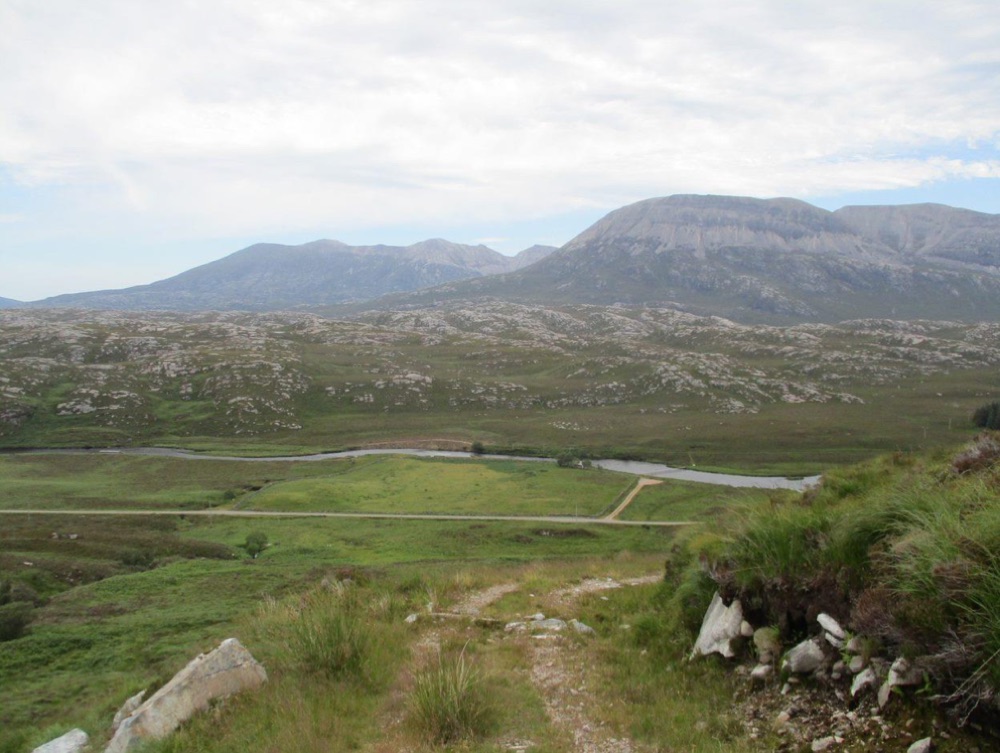by Juliette Desportes
The ‘Who Owned Scotland’ conference was hosted by the Economic and Social History Society of Scotland in June 2021. It presented an exciting opportunity to discuss the past, present and future of Scottish land ownership. The panels covered an impressive range of topics and periods to address the layered and complex relationships between land, resources and people, and the event was particularly strong in linking historical topics to themes as varied as social justice, heritage and literature. Who had access to land? Who did not? Working on the emergence of production-driven attitudes to landscape in the eighteenth-century Scottish Highlands, the conference resonated with my own research and led me to reflect on what ‘ownership’ means then and now.
Ownership is about power – over both resources and people. Eighteenth-century Highland tenants did not own their land. In fact, they had remarkably few legal rights in comparison with their English neighbours and ‘common’ land benefitted from no special status in the eyes of the law. The story of the ‘Clearances’, that of dispossession, loss and privatisation, is a well-known one. Several of the papers, and in particular the first two panels on so-called ‘improvement’ and empire, highlighted the overarching authority exerted by Scottish landowners and the sheer amount of material wealth at their disposal. The connection between Scotland, the empire and slavery should no longer surprise audiences but should be more than ever at the heart of discussions.
Yet, as Gemma Smith highlighted in her paper, landlords did not always possess as much power as they may have thought. In the ‘free state’ of Eddrachillis, hundreds of families lived outside the control of estate officials, to the despair of the infamous Sutherland agent James Loch. These tenants did not own their land, however they benefitted from rights of occupancy, rights they were not afraid to assert through outright land occupation. This issue was picked up by one attendee, as she asked in the chat box why we continued to employ the language of landlords, using words such as ‘poaching’. Trespass, poaching and enclosures are terms all too familiar to those who study the early modern period. I’ve often wondered whether referring to ‘improvement’ in my own research, even with inverted commas, is pertinent in light of the argument I wish to make. As suggested by Iain Mackinnon, ‘internal colonialism’ as an ideology was not only about ownership over things and people, but also about the colonisation of the minds, that of the Gaels as well as historians.
When I’m in the archives, I’m constantly reminded that the Highland and Islands tenantry had their own understanding of ‘ownership’. The concept of dùthchas, defined as a sense of inherited and unalienable right of tenure, has a rich historiography and informed people’s spatial sensibilities and worldviews. Researching resistance against ‘improvement’, I am always struck by the sheer number of acts of protest. If large-scale collective action waited until the nineteenth-century, everyday resistance was common as early as the 1750s. Encroachments, trespass or the destruction of hedges were not just reflections of landlords’ increasing control over space, these acts of ‘assertion’, to paraphrase historical geographer Iain Robertson, also displayed the tenantry’s belief in the legitimacy of their occupation of space. This sense moral ownership infused the very nature of protest in the Gàidhealtachd.
Protest was a performance which did not only reject the privatisation and criminalisation of space, but also celebrated a different kind of ownership and ways of thinking about the relationship between land and people. There were legitimate and illegitimate ways to occupy land and use its resources. In 1756 Coigach, subtenant Neil McLeod chased the tacksman’s recently purchased sheep from the hill ‘alledging that hill to be a property of the subtenants’. With the help of his wife and mother, he broke open the sheep’s enclosure and the women put the shepherd’s house on fire. This kind of retaliation and the use of the word ‘property’, an English translation from an unknown Gaelic original, suggest that dùthchas and ‘common land’ were concepts not so legally amorphous in the minds of the tenantry. This comes as a good reminder that ‘ownership’ takes on several meanings. If landlords owned the land, they did not necessarily occupy the minds of those living on it.
The last two panels allowed participants to reflect on the new meanings attached to land ownership today. There was talk of the ‘people’, communities and rethinking ownership both in a legal and emotional sense. The conference ended on a positive note and left participants with plenty of food for thought. Land ownership will continue to generate much debate, but if it can be discussed in terms that matter for the communities who live(d) on the land, and with the awareness of what kind of ‘ownership’ we are talking about, the future is very bright indeed.
Juliette Desportes is a third year SGSAH funded PhD candidate at the University of Glasgow. She researches how ‘improvement’, as an ideology and in its practical realisation, helped realise the Highland landscape ‘as it was’ and how it shaped people’s spatial sensibilities and worldviews. Her working PhD title is ‘Geographies of Scottish ‘improvement’: the Annexed Estates, 1752-1784’, supervised by Professor Charles W. J. Withers and Dr Andrew Mackillop.
Ideas for Further Reading
Secondary Sources
- Hunter, James, The Making of the Crofting Community (Edinburgh: Birlinn, 2010).
- Robinson, Iain J. M., Landscapes of Protest in the Scottish Highlands After 1914: The Later Highland Land Wars (Ashgate: Burlington, VT, 2013).
- Wightman, Andy, Who Owns Scotland (Edinburgh: Canongate, 1996).



